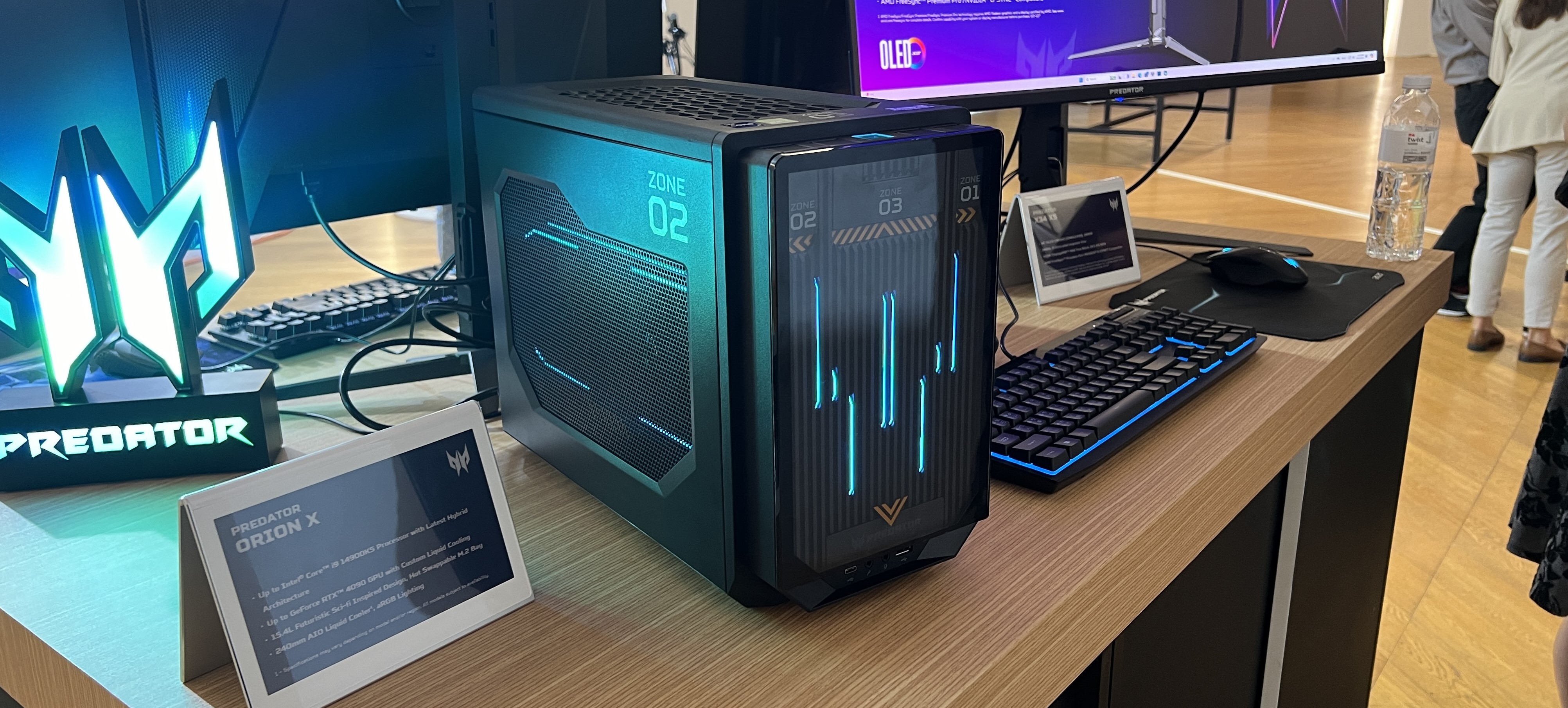Early Verdict
With an impressively small chassis, smartly designed internals, and some powerhouse components, this is one of the best compact gaming PCs I've seen in a long time. Acer's Orion desktop series has crystallized into something almost perfect, and I can't wait to get some alone time with it (I mean that in a totally normal way, I promise).
Pros
- +
Cleverly designed compact case
- +
RTX 4090 is a powerhouse GPU
- +
Swappable SSD is awesome
- +
Easy to upgrade
Cons
- -
Likely to be quite expensive
- -
Small size may limit upgrade potential
Why you can trust TechRadar
I’ve long been a fan of Acer’s excellent Orion gaming desktop line, and here at Computex 2024 in Taipei, Taiwan, I think Acer has just outdone itself. The Predator Orion X is a more compact - but no less powerful - version of Acer’s staple gaming PC, with a slick new design and some impressive specs.
With a 15.4-liter chassis and a total package weight of less than 9 kilograms, this is one of the smallest (if not the smallest) gaming desktops Acer has ever made. It measures just 25.6 x 17.8 x 33.5cm, but that small form factor case doesn’t sacrifice performance to save space; instead, the internals of this PC are smartly designed to make maximum use of the available room inside the case.
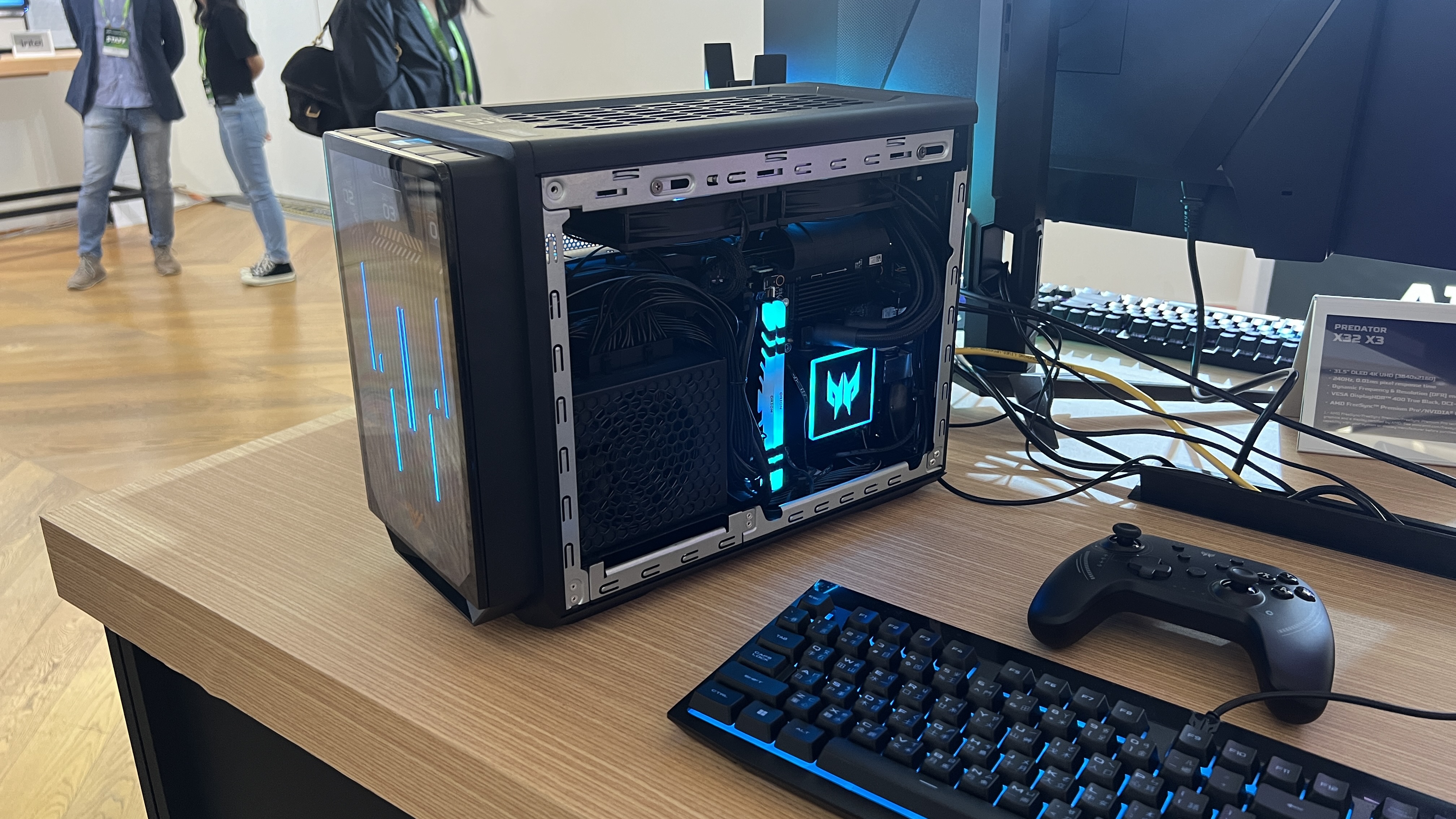
The interior of the chassis is neatly split into three zones: one for the CPU and mainboard, one for the graphics card, and one for the fans and AIO radiator.
Don’t be fooled by the cramped design, though - this is no Corsair One, where space-saving comes at the cost of easy upgradability. Acer designed the Orion X with PC DIY in mind, so accessing these three zones is actually incredibly simple.
Hot swap
On the front of the Orion X, there are three chunky release levers. Pull one, and off pops the corresponding zone panel, making upgrading or repairing a component a cinch. When you’re done, the panels slot back into place easily with no tools required. You can optionally cover the front of the case with a transparent panel, too.
I like that the industrial aesthetic of the Orion X’s exterior makes these release levers blend seamlessly into its visual design. The style might not be for everyone, but I personally love it; the use of RGB here is relatively understated, and the large ‘ZONE 2’ printed on the side evokes a certain genre of sci-fi dystopia that I’ve been known to enjoy.
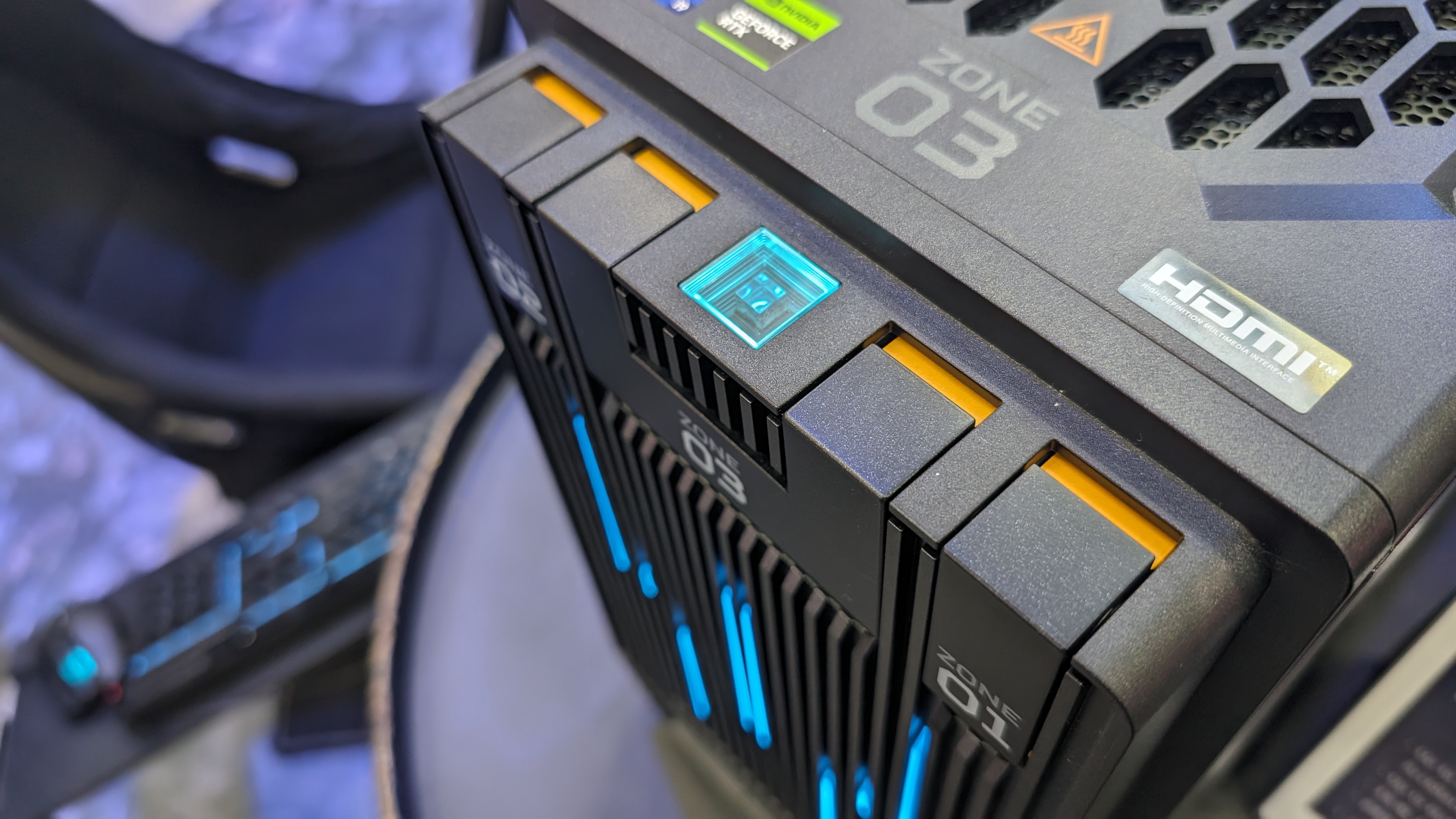
It gets better, though. On the front panel of the Orion X, a small flap opens up to reveal a slot containing a swappable M.2 SSD enclosure. Not only is it extra storage in general, which is never a bad thing, but it’s a boon for PC gamers who like to take their games on the go with them.
This alleviates the need for a portable SSD or a USB converter - you can simply take one of the best SSDs and slap a whole PC’s worth of games into this system in an instant. It’s potentially very handy if you’re buying the Orion X as an upgrade to an existing system, too; just extract your old SSD and drop it straight in here.
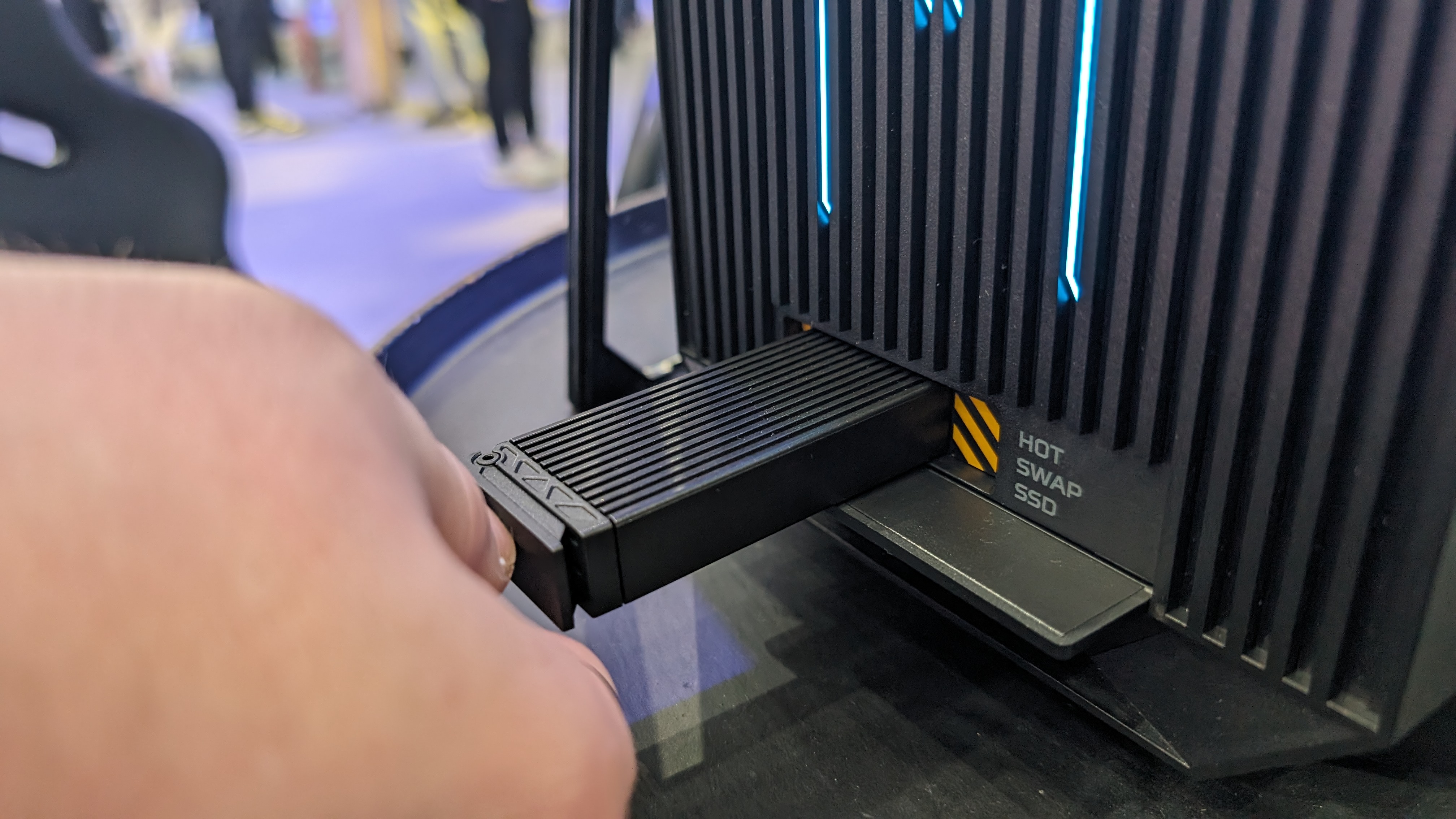
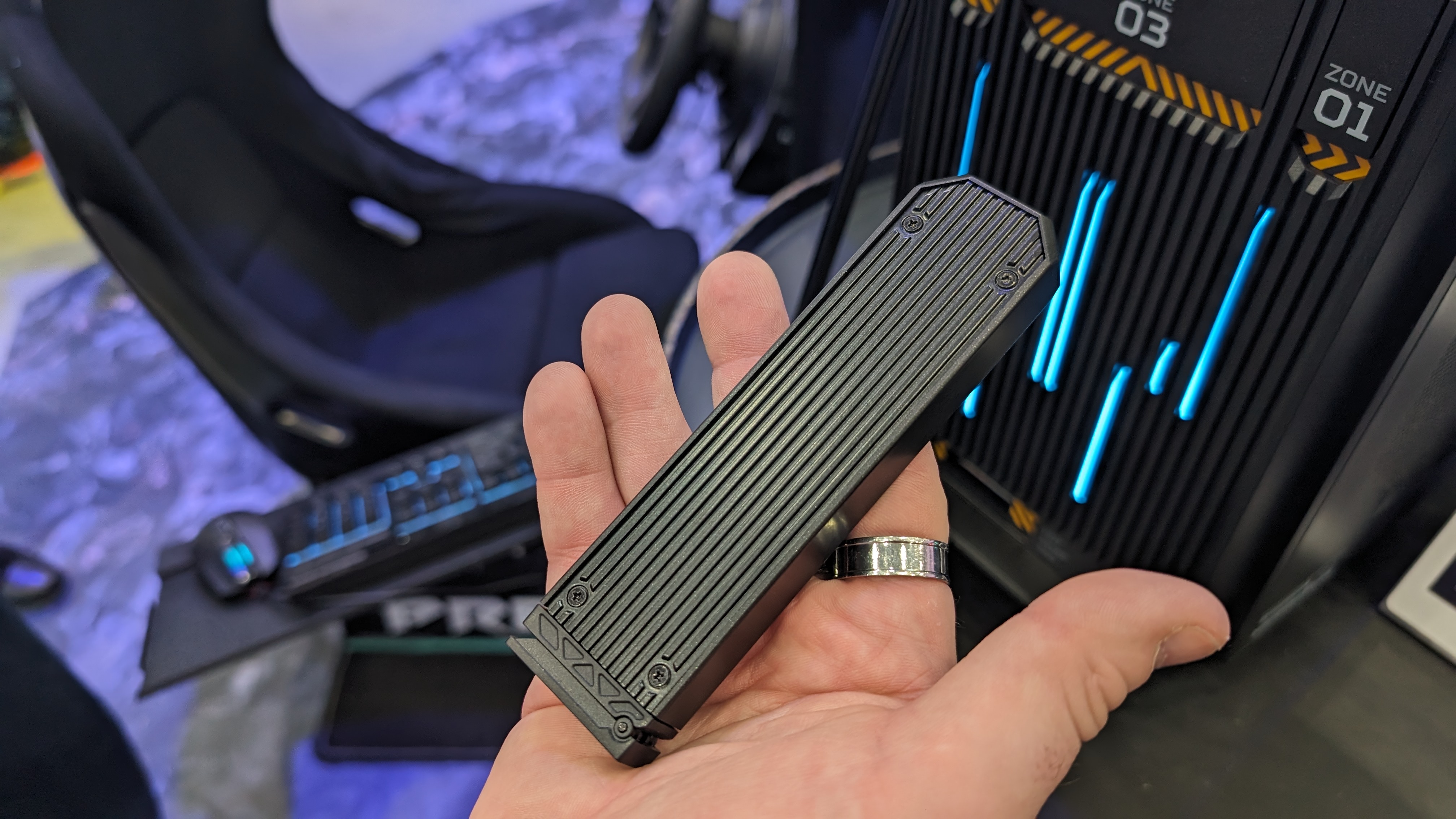
The tiny interior does mean that you may be limited in some areas when it comes to switching out certain components, but it's likely you'll never need to.
After all, the RTX 4090 is pretty future-proof. The only possible issue I can see here is if the AIO cooler fails, you'll need to specifically buy another one that fits perfectly - there's no room for a tower air cooler here.
Power under the hood
Despite its small size, the Acer Predator Orion X is packing a seriously respectable spec sheet. Acer has managed to cram a twin-fan RTX 4090 card of its own design inside this PC, so gaming performance is just about as good as it can get. With 32GB of DDR5 RAM (upgradable up to 64GB) and a 2TB PCIe SSD as standard, the GPU is well-supported.
One slightly odd choice here is the CPU, which is an Intel Core i9-13900KS. It’s a very powerful chip, no doubt about that, but I was surprised to find that the Orion X doesn’t use the newer i9-14900K, especially considering that chip has been on the market for months at this point. But then again, the 14th-gen desktop chips were merely a refresh of the 13th-gen Raptor Lake microarchitecture, and we noted in our review that the generational performance gains were next to unnoticeable, so perhaps this was just a smart move from Acer to help keep the price down.
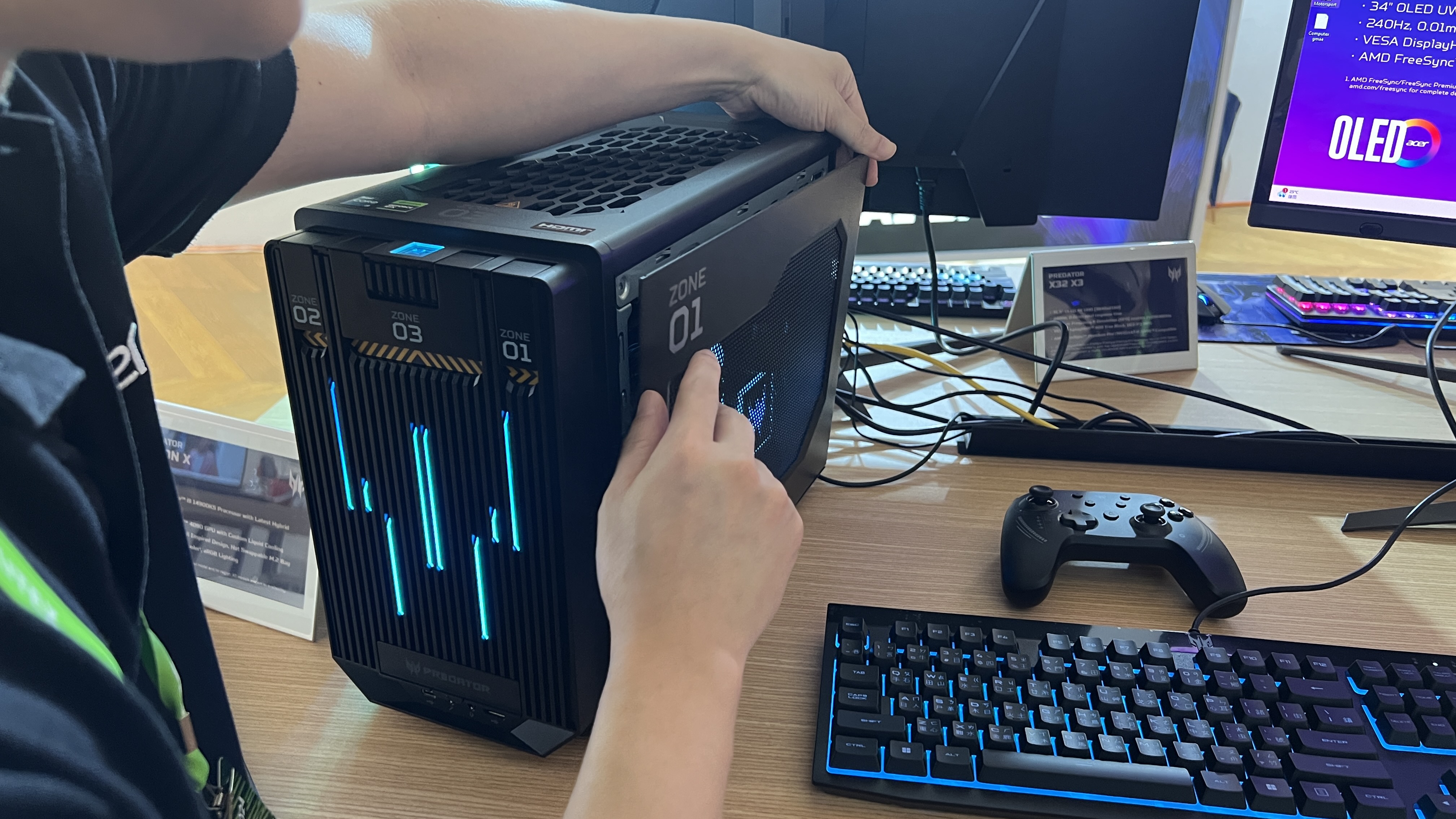
Speaking of price: the Orion X was actually announced at last year’s Computex, and has already been available to buy in the UK for a few months, albeit a less powerful model sporting an RTX 4080 instead of Nvidia’s flagship 4090 GPU. We don’t have official pricing for this new iteration, but given the current £3,299 price (around US$4,210 / AU$6,330), we can reasonably expect it to be less than £4,000 in the UK.
As for when it’ll arrive on the other side of the Atlantic, that’s not quite clear at this point. While researching, I found some Acer documentation that suggested it was originally slated for launch in the US in September of 2023, but that evidently didn’t happen, so we might be waiting a little longer for an American release. I certainly hope Acer gets its act together and gives us a proper global release soon, because this is one of the best compact PCs I’ve seen in ages.

Christian is TechRadar’s UK-based Computing Editor. He came to us from Maximum PC magazine, where he fell in love with computer hardware and building PCs. He was a regular fixture amongst our freelance review team before making the jump to TechRadar, and can usually be found drooling over the latest high-end graphics card or gaming laptop before looking at his bank account balance and crying.
Christian is a keen campaigner for LGBTQ+ rights and the owner of a charming rescue dog named Lucy, having adopted her after he beat cancer in 2021. She keeps him fit and healthy through a combination of face-licking and long walks, and only occasionally barks at him to demand treats when he’s trying to work from home.
What is a hands on review?
Hands on reviews' are a journalist's first impressions of a piece of kit based on spending some time with it. It may be just a few moments, or a few hours. The important thing is we have been able to play with it ourselves and can give you some sense of what it's like to use, even if it's only an embryonic view. For more information, see TechRadar's Reviews Guarantee.
